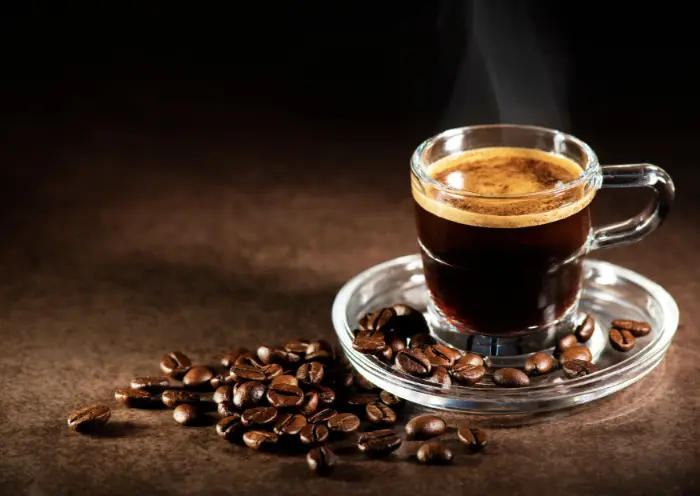Espresso is more than just a strong coffee—it’s a brewing method with a rich history. Many coffee lovers enjoy espresso daily, but few know its origins. How old is espresso, really? The answer involves innovation, cultural shifts, and technological advancements. This article explores espresso’s journey from early coffee traditions to the modern espresso machine.
The Origins of Coffee & Early Brewing Methods
To understand espresso, we must first look at coffee’s broader history. Coffee cultivation began in Ethiopia around the 9th century. By the 15th century, it spread to the Arabian Peninsula, where people brewed it using simple methods like boiling grounds in water.
The first coffeehouses appeared in Mecca in the 16th century. These places served coffee boiled in pots, similar to today’s Turkish coffee. European travelers brought coffee back from the Middle East, and by the 17th century, coffeehouses thrived in cities like Venice and London.
Early brewing was slow. People used cloth filters, metal pots, or simply let grounds settle. The process took time, and coffee was often bitter. There was no quick way to make a concentrated cup—until the 19th century.
The Birth of Espresso: 19th Century Innovations
The word “espresso” comes from Italian, meaning “pressed out” or “express.” It refers to both the speed of brewing and the method of forcing water through coffee. The idea of espresso emerged in the 1800s as a faster way to make coffee.
In 1884, Angelo Moriondo patented an early espresso machine in Turin, Italy. His design used steam pressure to push water through coffee quickly. However, his machine was bulky and meant for batch brewing in cafes, not single servings.
Luigi Bezzera improved Moriondo’s design in 1901. His machine had a boiler and portafilter, allowing baristas to make individual cups faster. Bezzera’s invention was the first true espresso machine, though it still relied on steam pressure, which sometimes made coffee taste burnt.
The Evolution of Espresso Machines
Early 20th-century machines were inconsistent. Steam pressure varied, and extraction was uneven. Then, in 1938, Achille Gaggia introduced a game-changer: the lever-operated machine.
Gaggia’s design used a spring-loaded piston to create higher pressure. This method produced a richer, creamier coffee with a layer of “crema”—the golden foam on top of espresso. The crema became a hallmark of quality, and Gaggia’s machines set the standard for modern espresso.
By the 1960s, electric pumps replaced manual levers, making machines more efficient. Companies like Faema popularized semi-automatic machines, which controlled water temperature and pressure more precisely.
Espresso Spreads Beyond Italy
Espresso was an Italian tradition for decades. After World War II, Italian immigrants brought espresso culture to the U.S., Australia, and beyond. However, it wasn’t until the 1980s and 1990s that espresso became globally popular.
Starbucks played a big role in this shift. The company introduced espresso-based drinks like lattes and cappuccinos to mainstream audiences. Suddenly, espresso wasn’t just for coffee connoisseurs—it was everywhere.
The Science Behind Espresso
What makes espresso different from regular coffee? It’s all about pressure, grind size, and extraction time.
Pressure: Espresso machines use 9 bars of pressure (about 130 psi) to force hot water through finely-ground coffee. This extracts flavors quickly and creates crema.
Grind Size: Espresso requires a fine grind, almost like powdered sugar. This increases surface area for better extraction.
Extraction Time: A proper shot takes 25-30 seconds. Too fast, and the coffee is weak; too slow, and it’s bitter.
The result is a concentrated, full-bodied drink with complex flavors.
Modern Espresso: From Specialty Cafes to Home Brewing
Today, espresso is more accessible than ever. High-end cafes use advanced machines with digital controls, while home baristas can buy affordable espresso makers.
Third-wave coffee movements emphasize quality, sourcing, and precise brewing. Baristas now experiment with variables like water temperature, pre-infusion time, and bean origin to perfect each shot.
Meanwhile, pod-based systems like Nespresso offer convenience, though purists argue they lack the depth of traditional espresso.
How Old is Espresso? A Timeline Summary
To summarize espresso’s age:
1800s: Early steam-powered machines (Moriondo, Bezzera).
Early 1900s: First true espresso machines.
1930s-1940s: Lever machines introduce crema.
1960s: Pump-driven machines become standard.
1980s-Present: Global expansion and specialty coffee revolution.
While espresso-like methods existed in the 19th century, modern espresso as we know it is about 80-120 years old.
Conclusion
Espresso’s history is a story of innovation. From rudimentary steam machines to today’s high-tech brewers, espresso has evolved into a global phenomenon. Whether enjoyed in a bustling café or brewed at home, it remains a symbol of coffee craftsmanship.
So, how old is espresso? In its earliest form, over a century. In its modern perfection, just decades. Yet its impact on coffee culture is timeless.
Related topics:
Why Does My Espresso Taste Sour?
What to Add to Espresso Martini?
Best Espresso Pods for Nespresso


